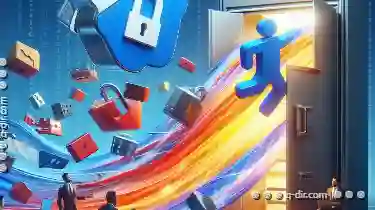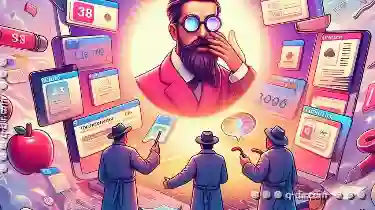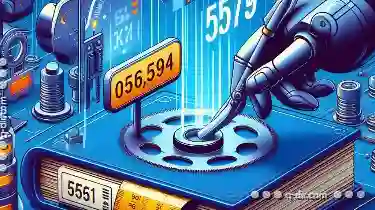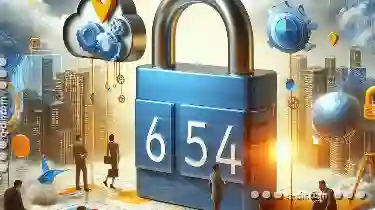When it comes to moving files and folders, especially in a digital environment where shortcuts (also known as symlinks or symbolic links) are often used ...
 for convenience, understanding what happens to these shortcuts can be crucial. This blog post will delve into the specifics of what occurs when you move files that contain broken links, focusing on how operating systems handle such situations.
for convenience, understanding what happens to these shortcuts can be crucial. This blog post will delve into the specifics of what occurs when you move files that contain broken links, focusing on how operating systems handle such situations.1. Understanding Shortcuts and Their Nature
2. What Happens When You Move a File with a Broken Link?
3. Conclusion
1.) Understanding Shortcuts and Their Nature
Before we dive into the consequences of moving files with broken links, let's first clarify what a shortcut is:
- Shortcut: A small file or special type of file (depending on the operating system) that points to another file or directory. This can be local to the same drive or network-based.
- Broken Link: A shortcut that no longer has an accessible target because the original file, folder, or path is either missing, inaccessible, or not found.
2.) What Happens When You Move a File with a Broken Link?
Windows OS:
In Windows, moving files using standard cut and paste operations will generally preserve shortcuts as long as they still point to valid targets within the move operation. However, if the shortcut's target is moved out of its original location or becomes inaccessible due to being deleted or moved elsewhere, the shortcut itself will become broken. When you try to use such a shortcut, Windows may display an error message indicating that the link cannot be found.
- Behavior Upon Moving: If you move a folder containing broken shortcuts, the shortcuts themselves do not get updated automatically unless they are explicitly designed to follow the target during moves (which is uncommon). The shortcuts remain in place but point to nowhere, making them effectively useless and potentially causing confusion or errors when accessed through these links.
- Resolution for Broken Links: To fix a broken link, you need to manually update the shortcut's target path to reflect its new location. This can be done by right-clicking the shortcut icon, selecting properties, and then updating the path pointing to the correct file or folder. Alternatively, if you have version control over your files, you might restore the original item from a backup before moving it.
macOS (macOS/OS X):
macOS handles shortcuts similarly to Windows in that standard move operations will not automatically update the links unless they are explicitly designed to follow targets during moves. If a shortcut points to an inaccessible target:
- Behavior Upon Moving: The shortcut itself becomes broken, and attempting to use it results in an error message indicating the link is no longer valid.
- Resolution for Broken Links: Updating broken shortcuts on macOS involves similar steps to Windows - right-clicking the shortcut icon, selecting "Get Info," and then updating the path manually if necessary. The Finder can also be used to move files while preserving symbolic links through options during drag and drop operations.
Linux:
In a Unix-like system like Linux, handling broken shortcuts is similar across distributions:
- Behavior Upon Moving: If you move a file that contains a broken link (such as a dangling symlink), the operation will generally complete successfully without altering the symlinks unless they are explicitly designed to follow targets during moves. The broken links remain in place but point to non-existent or inaccessible targets, causing errors when accessed through these links.
- Resolution for Broken Links: Updating broken shortcuts on Linux typically involves checking and fixing the symlink manually using commands like `readlink -f` to check the target of a symlink and `rm` or `unlink` to remove or update them if necessary. Using tools like `find` with appropriate flags can also help in managing such files systematically.
3.) Conclusion
Understanding how your operating system handles broken shortcuts during file moves is essential for maintaining efficiency while avoiding unnecessary errors. Whether you are using Windows, macOS, or Linux, being aware of the implications of moving files that contain broken links will enable you to manage and repair these links more effectively. Always ensure that critical data and paths are up-to-date by verifying and updating shortcuts after any move operation, which can save considerable time in the long run compared to dealing with persistent errors caused by inaccessible targets through shortcuts.

The Autor: / 0 2025-02-17
Read also!
Page-

Why macOS Finder s Column View is Flawed
The macOS Finder, while generally user-friendly and efficient for managing files and folders, has some notable shortcomings when it comes to the ...read more

The Ultimate Guide to Cutting Files Without Data Loss
One of the most common yet crucial tasks in this realm is cutting files without losing any data. This operation involves removing a file from its ...read more

Favorites' "Restore Previous Versions": A Feature Most Don't Know They Need.
This is where the often overlooked feature of "Restore Previous Versions" comes to the rescue - a utility that most users are not even aware they ...read more